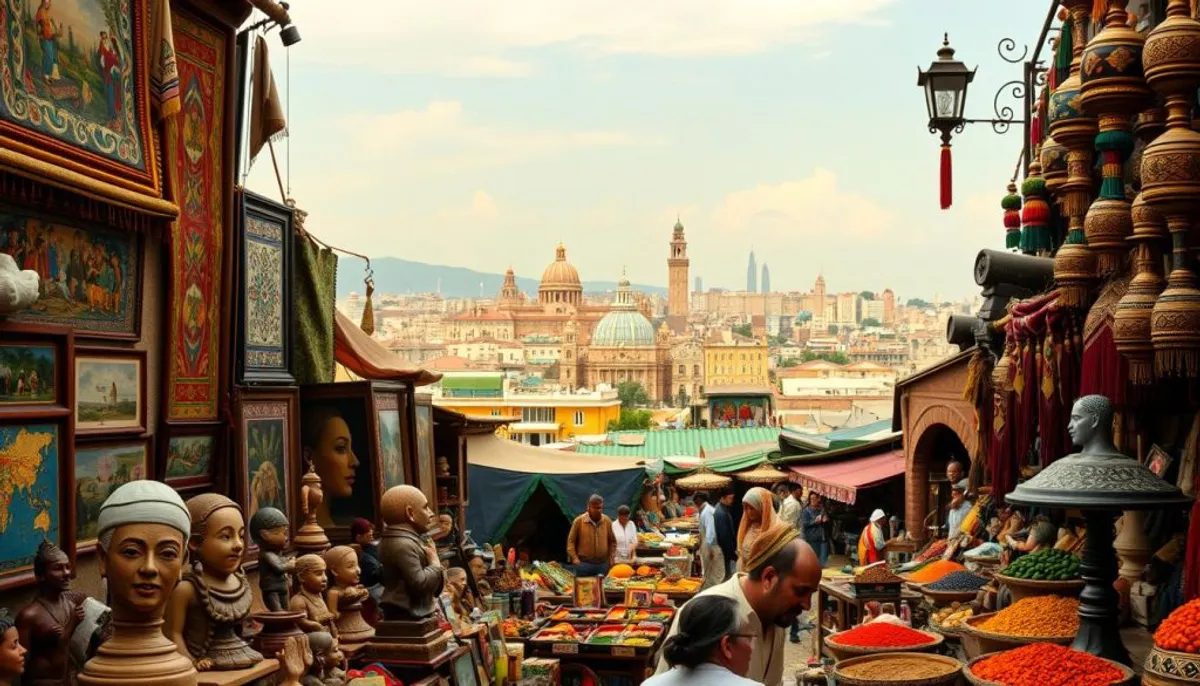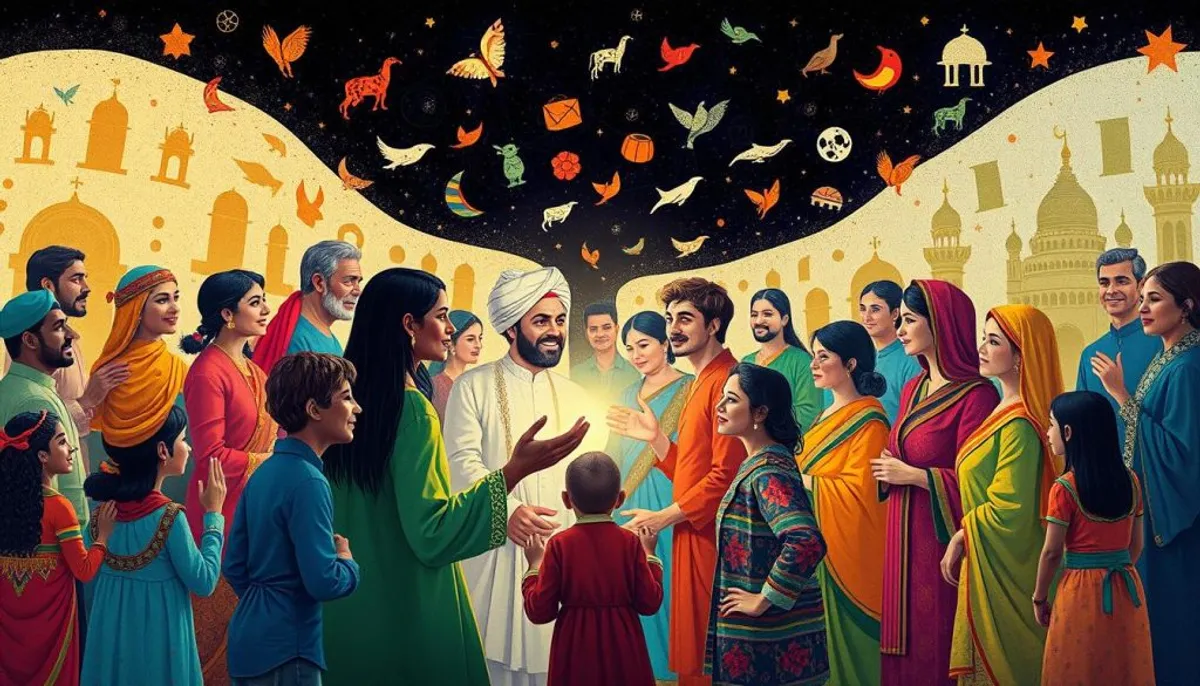The concept of culture is central to our society. It encompasses a vast array of elements that shape our identity and daily lives. Understanding culture allows us to better appreciate the cultural diversity that surrounds us.
UNESCO defines culture as more than just the arts and letters. It includes our ways of life, values, traditions, and beliefs. This broad definition illustrates the extent of this fascinating concept.

In 1952, Kroeber and Kluckhohn listed over 150 definitions of the word culture. This diversity of meanings shows the complexity and richness of this term. Culture influences both our personal identity and our belonging to a group.
Understanding culture is essential for our heritage. The petroglyphs of Gobustan in Azerbaijan, dating back 12,000 years, illustrate the ancientness and cultural diversity of humanity. Today, this diversity is manifested in our museums and heritage sites, attracting millions of visitors each year.
What is culture: origins and fundamental definitions
The concept of culture, fundamental to our identity, has its roots in the past. The word “culture” comes from the Latin “cultura,” originally related to the care of fields and livestock. Over time, its meaning has expanded to cover cultural expression in all its facets.
The etymology and evolution of the term cultural
The evolution of the term “cultural” illustrates the complexity of our cultural heritage. In 1952, Kroeber and Kluckhohn listed over 150 definitions of the word culture. This variety highlights the crucial importance of culture in our society.
The different interpretations according to UNESCO
UNESCO defines culture as a set of distinctive, spiritual, and material traits. It includes the arts, letters, ways of life, values, traditions, and beliefs. This definition emphasizes the diversity of cultural expression.
| Cultural aspects | Examples |
|---|---|
| Material | Clothing, buildings, vehicles |
| Immaterial | Dance, theater, music |
| Mentifacts | Oral traditions, beliefs |
| Sociofacts | Family, school, religious institutions |
The distinction between individual and collective culture
Culture manifests at two levels: individual and collective. Individual culture develops from childhood, with language learning as the first step. Collective culture includes shared practices within a society, forming the foundation of our common cultural identity.
This duality between individual and collective reveals the complexity and richness of our cultural heritage in Latin America. It profoundly influences our social interactions and our understanding of the world.
The essential dimensions of cultural expression
Cultural expression manifests in various forms, reflecting the richness and complexity of our society. It encompasses spiritual, material, intellectual, and emotional aspects that characterize a social group. This diversity can sometimes lead to a cultural shock, but it also offers unique opportunities for enriching intercultural dialogue.
The spiritual and intellectual aspects
Spirituality and intellect are at the heart of cultural expression. They shape our worldview and influence our social interactions. The Convention on the Protection and Promotion of the Diversity of Cultural Expressions, adopted in 2005, recognizes the importance of these immaterial aspects.
The material and artistic manifestations
Art, architecture, literature, and cinema are tangible examples of cultural expressions. These creative manifestations contribute to the production of cultural goods and services, carrying both economic and cultural value.

Value systems and traditions
Values and traditions form the foundation of any culture. They are passed down from generation to generation, evolving over time. The Convention for the Safeguarding of the Intangible Cultural Heritage, adopted in 2003, emphasizes the importance of preserving these intangible elements.
| Dimension | Example | Impact |
|---|---|---|
| Spiritual | Religious beliefs | Influence on moral values |
| Intellectual | Philosophy | Shapes critical thinking |
| Material | Architecture | Reflects history and identity |
| Artistic | Music | Fosters emotional expression |
These dimensions of cultural expression are essential for understanding and appreciating the diversity of our world. They provide fertile ground for intercultural dialogue, allowing us to overcome cultural shocks and build a more inclusive and respectful society.
The importance of cultural diversity in our society
Cultural diversity is an invaluable asset for our society. It enriches our understanding of the world and stimulates innovation. In the context of cultural globalization, preserving this diversity becomes a major challenge.
Companies that value cultural diversity achieve remarkable results. According to a study by McKinsey & Company, these companies are 35% more likely to outperform their competitors in terms of profitability. Google, for example, offers its services in 4,000 languages, demonstrating its commitment to cultural inclusion.
Cultural policies play a crucial role in promoting diversity, particularly through initiatives recognized by UNESCO. Giants like Renault-Nissan-Mitsubishi have implemented intercultural training to improve collaboration and enhance their competitiveness in the global market. These initiatives have a positive impact on team productivity and performance.
Cultural diversity also influences talent recruitment and retention. Two-thirds of candidates consider diversity an important factor in their job search. Additionally, 38% of employers state that cultural diversity contributes to retaining talent.
By promoting cultural diversity, we create a more dynamic and inclusive society. It stimulates creativity, broadens our perspectives, and prepares future generations to thrive in an interconnected world.
The role of culture in personal and social development
Culture is essential to our personal and social development. It shapes our perception of the world and influences our interactions. What is culture? It is the essence of our identity. Let’s examine its impact on our lives.
The impact on education and learning
Culture has a profound impact on our education and learning. Studies show that 70% of cultural interactions occur informally. This underscores the importance of the cultural environment in our training.

The contribution to social cohesion
Cultural values are crucial for social cohesion. Cultural diversity increases tolerance and fosters intercultural dialogue. However, challenges exist: about 30% of populations feel excluded from cultural activities.
The influence on individual and collective identity
Culture shapes our individual and collective identity. 80% of people say that access to cultural experiences enriches their identity. Cultures can be divided into independent and interdependent, influencing our values.
| Type of culture | Characteristics | Examples of countries |
|---|---|---|
| Independent | Individualistic, autonomy valued | United States, Canada, Netherlands |
| Interdependent | Collectivist, social harmony prioritized | China, Latin American countries |
The challenges of cultural transmission in the modern era
Cultural transmission faces major challenges in our time. Technological advancements and cultural globalization are profoundly changing our cultural practices. They influence how we create, share, and consume culture.
Cultural heritage and its preservation
Cultural heritage, fundamental to our collective identity, is threatened by urbanization and modernization. To preserve it, it is essential to coordinate our efforts. This allows us to maintain our traditions while adapting to societal changes.
The challenges of cultural globalization
Cultural globalization presents considerable challenges. It can lead to the homogenization of cultures, thereby threatening local identities. However, it also offers opportunities for enriching cultural exchanges.
Adapting to new technologies
New technologies are transforming our relationship with culture. A recent study reveals:
- 90% of 15-25 year-olds connect to the Internet
- The average weekly time spent online reaches 20 hours
- Young people are the largest users of instant messaging and blogs
These data highlight the impact of digital technology on modern cultural transmission. Practices are evolving: Wikipedia is replacing traditional encyclopedias, marking the shift from paper to screen.
| Aspect | Impact of digital technology |
|---|---|
| Cultural production | Increase and diversification |
| Notion of authorship | Questioning (Wikis, Mods) |
| Learning | Adoption of “life-long learning” |
In the face of these challenges, it is crucial to find a balance between preserving cultural heritage and adapting to new digital realities. This is essential for ensuring successful cultural transmission in our era.
Conclusion
The study of culture reveals its depth and complexity. Cultural diversity, much more than a slogan, is a living reality shaping our society. It unfolds through a variety of cultural expressions, from ancient traditions to modern innovations.
Cultural identity is essential to our personal and collective development. It shapes our education, creativity, and our ability to communicate with others. Data indicates that individuals with a solid general culture have considerable advantages, both in their studies and in their careers.
In the face of the challenges of globalization and technological evolution, preserving our cultural heritage is crucial. Cultural policies must adapt to support this diversity while encouraging innovation. Understanding and valuing our culture enriches our human experience and contributes to a more open and harmonious world.
RelatedRelated articles


